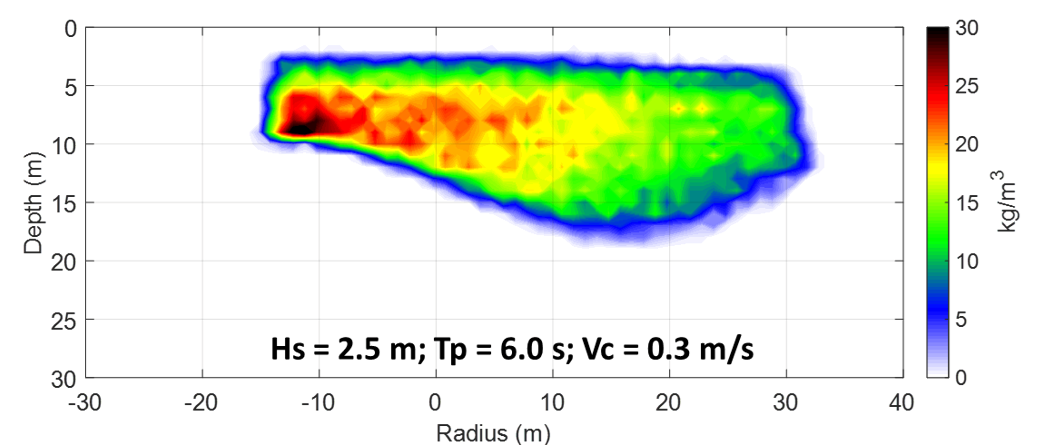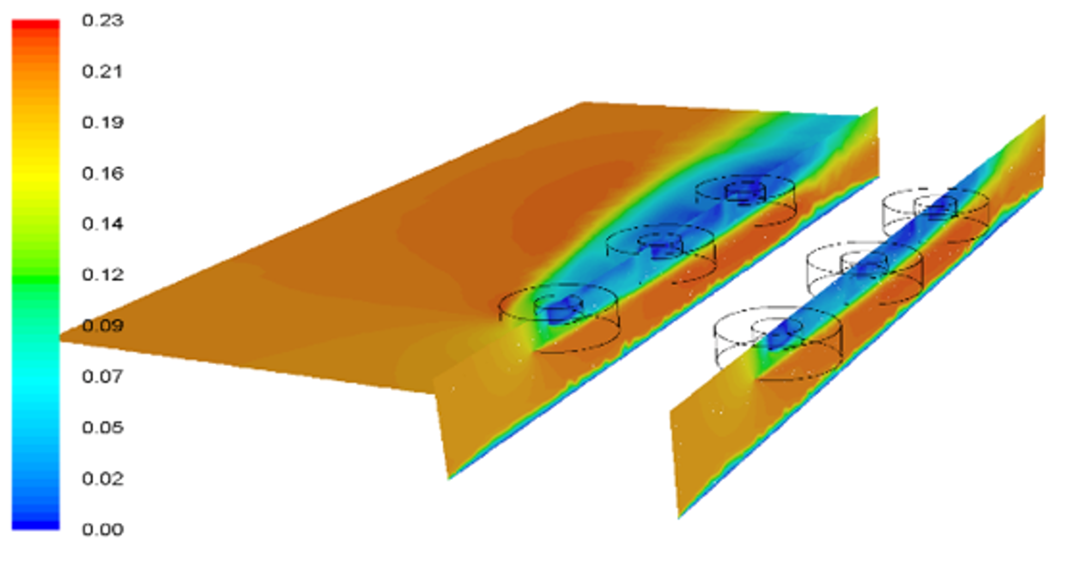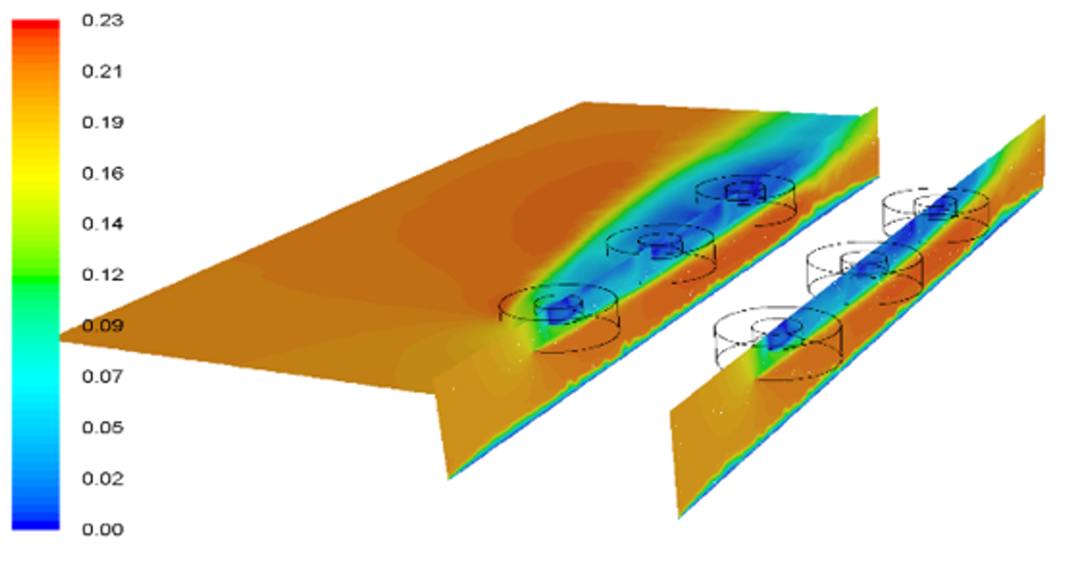Project objectives
The FutureWelfare project addresses key knowledge gaps related to the behaviour and welfare of farmed salmon introduced by the rapid and recent development of an array of new farming systems and locations. These new farming systems attempt to reduce long-standing and intractable environmental problems such as salmon lice infestations and the escape of farmed fish. However, new knowledge is required to assess how these new farm types impact the behaviour and welfare of salmon.


a) Example of 3D CFD flow simulation (SINTEF) around a fish farm with cages with lice barrier (snorkel). Velocity reductions (dark blue) are greatest in downstream cages and may represent locations with low dissolved oxygen levels. b) Examples of the simulated fish distributions (SINTEF) in a flexible sea cage with currents and waves. Colormap indicates directly the fish density (from 0-30kg/m3)
Secondary objectives:
Based on 3 case studies of existing and planned technologies (traditional cages with waves and currents, lice-limiting skirts and snorkels, and submerged cages) we will:
- Document the production environment, the salmon's behavior and welfare
- Document adaptive capacity (adaptation and active learning) to new production systems
- Develop a method for welfare assessment based on the existing Salmon Welfare Index Model
- Put it together in a biophysical model that can be used as a tool to assess how the salmon's behavior and welfare will be in most new farming systems.
Results and expected utility values:

| Bottom mounted ADCP, 3D high-accuracy single-point current meter and vertical currents velocity profile | Echosounder and measurement signal of vertical fish distribution | Catamaran with embedded ADCP and vertical currents velocity profile on the wake of fish cages |
FutureWelfare has first focused on developing fundamental knowledge on production environments, fish behaviour and welfare in new farming systems and locations using three case studies of existing and planned technologies (exposed traditional cages, lice-barrier skirt and snorkel cages, and submerged cages). It has then generated knowledge of the adaptive capacity of fish within these new farming systems, and how this can be facilitated or encouraged for production and welfare benefit. Swimming behaviour (swim speed, surface activity, tilt angle) and total echosounder strength over time seem to be good candidates for future welfare indicator in some of the new cage technologies, in addition to the present operational welfare indicators (OWIs).
In Exposed area: we show that salmon avoid waves, swim below them and maintain their normal behavior. We also show that salmon behavior is related to the exposure of the cage, in the farm layout, to waves and currents. An integrated numerical model of fish and flexible sea cages is used to simulate the fish behavior under waves and currents and it able to reproduce the observed fish distributions in general. Thresholds for salmon and cleaner fish ability to tolerate water currents occurring more often in offshore farming have been extensively investigated and is reviewed in a welfare perspective and used in up-to-date welfare guidelines.
Measurements of production efficiencies, lice levels, welfare and environment have been conducted in multiple cages with lice barrier technologies like skirt, snorkel and submerged cages. These new technologies do not reduce the welfare of the salmon, when applied optimal and environment (e.g. oxygen) is kept within normal levels.

